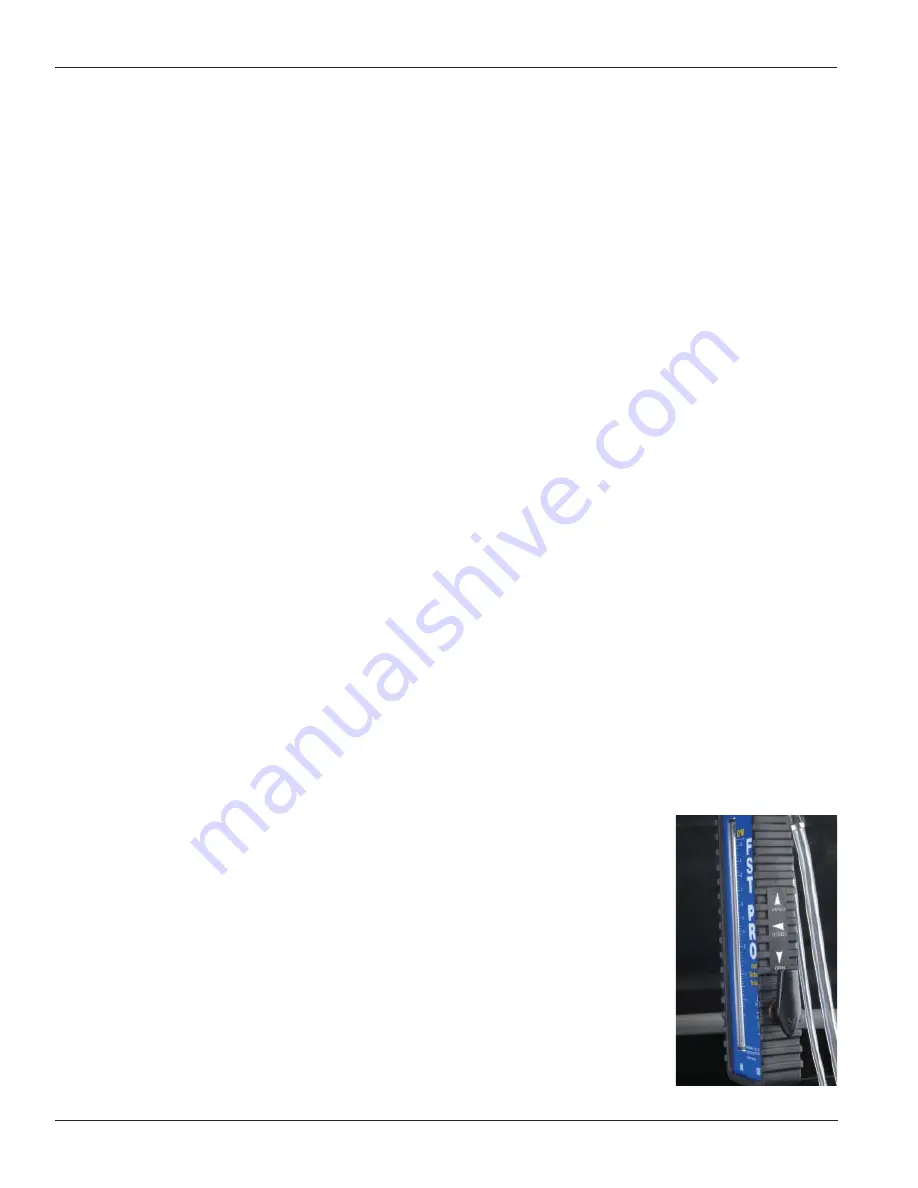
Page Number - 18
Form 824262
6. After noting the peak flow, return the flow control valve to the
OPEN position.
Peak Demand Test
7. Note the vehicle’s engine size and maximum engine speed (RPM).
Refer to the Maximum Engine Fuel Volume Requirements table
(Appendix A), and use the size and speed values to determine the
maximum fuel volume requirement of the engine.
8. With the car idling, rotate the flow control valve past the 90°
CLOSED position towards BYPASS (Fig. 25). Adjust the valve until
the flowmeter indicates an amount of fuel flow equivalent to the
value for the maximum engine fuel volume taken from the table
(Fig. 26).
9. Note the pressure reading on the gauge.
10. After noting the capability pressure, return the flow control valve
to the OPEN position. Testing is complete.
Diagnosing the Results
The values for three critical fuel system performance indicators should
have been noted while following the procedures and performing the
tests outlined above:
• Idle
Pressure
•
Peak (Bypass) Flow
•
Peak Demand Pressure
These indicators are the key to properly diagnosing a malfunctioning
fuel delivery system, and pinpointing the cause.
Compare the three values to the Returnless (mechanically regulated)
Fuel System Diagnostics Chart (Appendix C). If according to the chart,
the FST test values indicate a normal operating fuel delivery system,
then the engine is receiving the proper pressure and flow of fuel, even
under maximum load conditions. If the FST indicates a
normal operating fuel delivery system, yet the vehicle continues to
experience symptoms of a fuel delivery malfunction, it could be caused
by contaminated fuel, faulty fuel injector(s), or an intermittent compo-
nent malfunction such as a sticking pressure regulator or loose electri-
cal connection.
If the FST test results are inconclusive as to whether there is a fuel
delivery system malfunction, or if a malfunction is evident but the diag-
nostic chart does not clearly indicate the cause, additional testing may
be performed to provide more insight into the performance of
the system. Extended test procedures are outlined below, and provide
a more in-depth understanding of how the components of the fuel
system affect its performance.
Additional Testing and Diagnostics
Blocked Inline Fuel Filter
Not all mechanically regulated returnless fuel systems utilize an
externally mounted fuel filter (see Types of Fuel Delivery Systems/
Mechanically Regulated). If the vehicle has an accessible fuel filter,
and initial test results indicate it may be partially blocked, retest the
fuel system with the FST connected at the inlet of the fuel filter. If the
peak flow and peak demand pressure are higher then in the initial test,
replace the fuel filter and retest. If the peak flow and peak demand
pressure remain the same, this would indicate a clogged
inlet strainer/sock.
Clogged Inlet Strainer/Sock
The test results for pressure and flow of a clogged inlet strainer
will closely match those of a clogged inline filter. The peak demand
pressure of a clogged inlet strainer will be slightly lower than that
of a clogged inline filter, and the current draw will also be lower.
Fig. 27















































